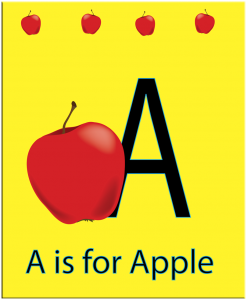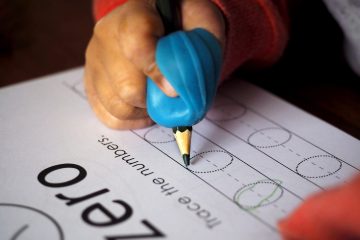In my last post I discussed how you can get your child’s reading development off to a good start with activities for infants and toddlers. Those budding skills will need to continue being nurtured as your child moves from toddlerhood to preschool.
Ideally you have already familiarized your child with the alphabet by now, but if not then it is a good place to start. Once your child is familiar with the alphabet, you can begin introducing basic concepts of phonological awareness.
 What is phonological awareness?
What is phonological awareness?
It’s the understanding of sounds in relation to language. Phonemic awareness is one aspect of phonological awareness. It also includes an understanding of rhyme, syllables, and other aspects of language sound.
This may sound like rather complicated material to be introducing to a young child, but the development of phonological awareness is a natural part of the reading process, and evolves out of an understanding of the alphabet.
Phonological awareness has been shown to be a strong predictor of overall reading ability. Children who demonstrate an understanding of the connection between letters and their sounds tend to have an easier experience in building reading skills.
Once you see that your child is getting comfortable with identifying and naming letters of the alphabet, you can start drawing your child’s attention to phonological awareness concepts with these activities:
- Practice letters with pictures: Use letters with pictures that contain the letter sound to demonstrate sounds to your child. For example, show your child a flash card with a picture of a dog on it next to the letter d, and say the word “dog” out loud, emphasizing the /d/ sound.
- Point out letters: Point out letters within words in books, around the house, on signs, and so on, and explain the sounds those letters are making within the words.
- Teach songs and rhymes: Children’s songs and nursery rhymes can give children practice with hearing the natural rhythms of spoken language.
- Introduce phonics-related online media: Let your child watch videos that demonstrate letter-sound relationships, and introduce your child to interactive phonics activities on the computer or a smartphone app.
- Visit phonologicalawareness.org for some more great resources and information.
One note to keep in mind when practicing letter sounds with your children is that individual phonemes are comprised of one sound only. For example, the /b/ sound in the letter “b” should not be pronounced “buh” or “beh.” When pronouncing letter sounds as a model for your child, try to keep each sound as distinct as possible–this will make it easier for your child to eventually blend multiple sounds together to make words.
A child who knows that the letters “b,” “a,” and “t” have the sounds /b/, /a/, and /t/ can eventually blend those sounds into the word “bat.” However, if the child hears those sounds as “buh,” “ah,” and “tuh,” he or she may attempt to blend the sounds into a multi-syllable or overly complicated word.
For more information and ideas, watch this YouTube video on Phonemic Awareness.
What are your favorite toddler or preschool activities to promote literacy? Questions or comments welcome here.


